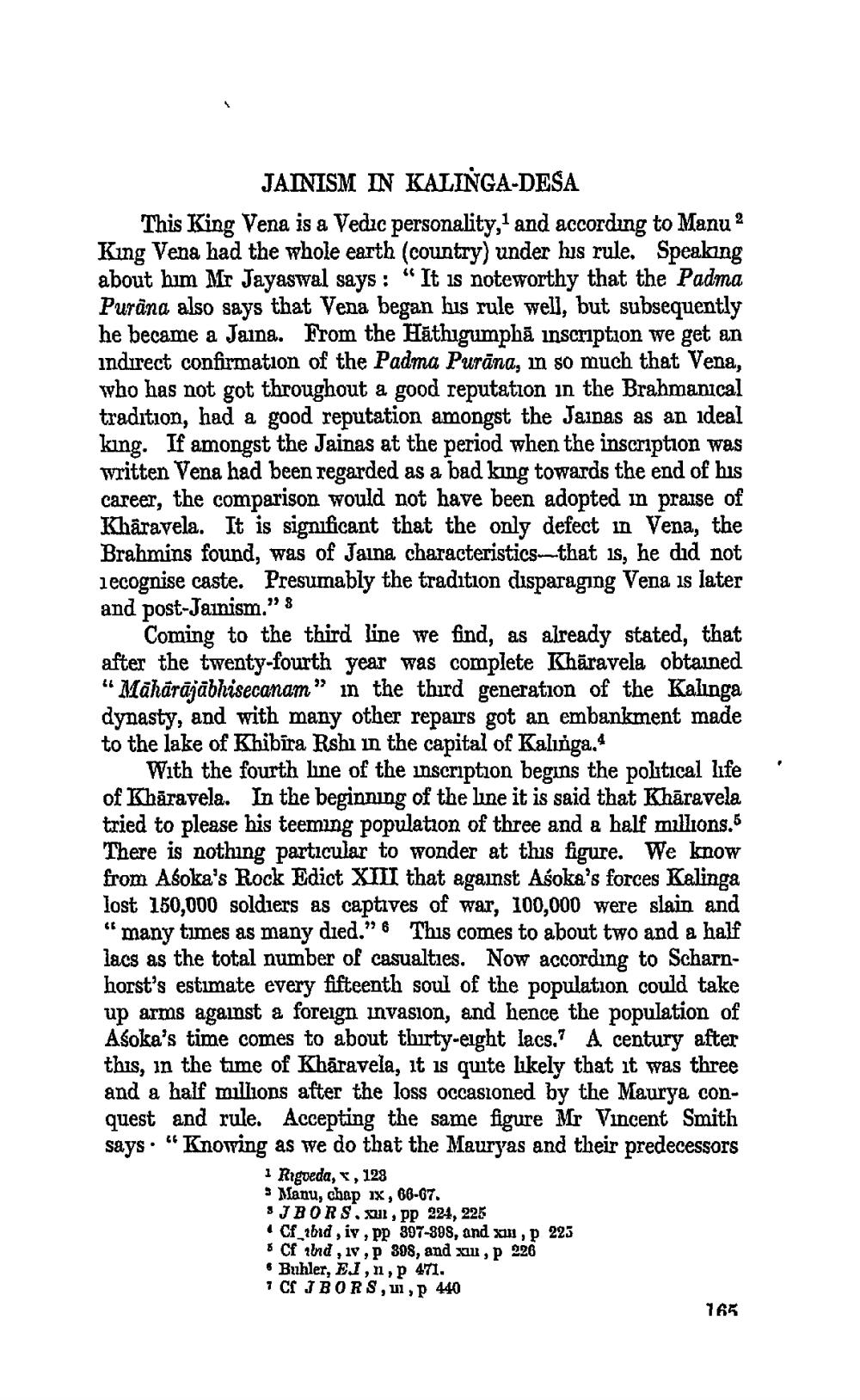________________ JAINISM IN KALINGA-DESA This King Vena is a Vedic personality, and according to Manu? King Vena had the whole earth (country) under his rule. Speaking about him Mr Jayaswal says: "It is noteworthy that the Padma Purana also says that Vena began his rule well, but subsequently he became a Jaina. From the Hathugumpba inscription we get an indirect confirmation of the Padma Purana, in so much that Vena, who has not got throughout a good reputation in the Brahmanical tradition, had a good reputation amongst the Jainas as an ideal king. If amongst the Jainas at the period when the inscription was written Vena had been regarded as a bad king towards the end of his career, the comparison would not have been adopted in praise of Kharavela. It is significant that the only defect in Vena, the Brahmins found, was of Jaina characteristics--that is, he did not 1ecognise caste. Presumably the tradition disparaging Vena is later and post-Jainism." S Coming to the third line we find, as already stated, that after the twenty-fourth year was complete Kharavela obtained "Maharajabhisecanam" in the third generation of the Kalinga dynasty, and with many other repairs got an embankment made to the lake of Khibira Rshi in the capital of Kalinga. With the fourth line of the inscription begins the political life of Kharavela. In the beginning of the line it is said that Kharavela tried to please his teeming population of three and a half millions. There is nothing particular to wonder at this figure. We know from Asoka's Rock Edict XIII that against Asoka's forces Kalinga lost 150,000 soldiers as captives of war, 100,000 were slain and "many times as many died." This comes to about two and a half lacs as the total number of casualties. Now according to Scharnhorst's estimate every fifteenth soul of the population could take up arms against a foreign invasion, and hence the population of Asoka's time comes to about thirty-eight lacs.? A century after this, in the time of Kharavela, it is quite likely that it was three and a half millions after the loss occasioned by the Maurya conquest and rule. Accepting the same figure Mr Vincent Smith says. "Knowing as we do that the Mauryas and their predecessors 1 Rigveda, , 128 Mfanu, chap Ix, 60-67. SJBORS. Xu, pp 224, 225 * Cf_1bid, iv, pp 397-398, and xin , p 223 Cf ond , 1v, 308, and xiu, p 226 6 Buhler, E.In, p 471. 1 C JBORS,1,P 440 165




